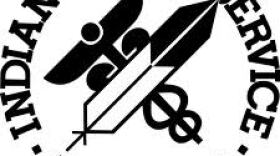Around 25-thousand Native Americans in New Mexico will become eligible for Medicaid when the Affordable Care Act goes into effect next year. The change translates to more money for the Indian Health Service. But as KUNM’s Poverty and Public Health Reporter Tristan Ahtone explains: in Albuquerque, Medicaid expansion will also force Native health providers to deal with something they’ve never faced before: competition from non-tribal health programs.
TRANSCRIPT:
TRISTAN AHTONE: New Mexico has one of the largest Native American populations in the nation, and nearly 40% of that population currently lacks health insurance. Take John Armijo, for instance. He’s an enrolled member of the Pueblo of Jemez located in central New Mexico. When he learned he would be eligible for Medicaid in 2014, he says it came as a relief.
JOHN ARMIJO: I was thinking “oh god, this will be great” you know, for me, one of the baby boomers and my fellow tribal members, it’ll be a great thing and if that happens. I won’t have to wait for the retirement age to have these services...
TRISTAN AHTONE: Armijo is three years shy of being eligible for Medicare, works part time for the U.S. Forest Service - which doesn’t provide him with insurance - and makes just enough money to be ineligible for Medicaid. However, next year when the state expands its Medicaid program, Armijo will have coverage, and choices.
ARMIJO: If my health deteriorates or goes bad and I’ll be looking for other services, you know, like, special doctors or special hospitals or whatever.
TRISTAN AHTONE: Like many Native Americans, Armijo has received medical care through the Indian Health Service, or IHS, for most of his life. The IHS system provides free, basic services to tribal citizens… and pays for more complicated procedures it can’t handle at other facilities. If there’s enough money to pay for it. According to Jay Steiner, with the National Council on Urban Indian Health, current federal funding for IHS is estimated to be at about one-quarter of need.
JAY STEINER: So because of the under funding of the Indian Health Service, there isn’t the capacity to provide a lot of the services that our patients require…
TRISTAN AHTONE: Think of IHS’s finances like a pie. Or a quarter of a pie, if we keep in mind the service is funded at 25% of need. Now take that pie slice, and divide it between 612 hospitals, health centers and clinics across the nation. In states where Medicaid expansion is happening, like New Mexico and Arizona, more Native Americans will have access to that federal health insurance plan. That means when they show up at an IHS facility, IHS can bill Medicaid for services instead of paying out of pocket.
STEINER: What were hoping is that we can take advantage of additional revenues made available by the expansion of Medicaid, to make up for that shortfall somewhat.
TRISTAN AHTONE: But with insurance comes choice. Once a tribal citizen has Medicaid dollars in hand, they can take their business wherever they want.
LINDA STONE: We realize that as people get insurance they have more choices,
TRISTAN AHTONE: Linda Stone is the CEO of First Nations Community Health Source, an Urban Indian Clinic in Albuquerque.
STONE: That for us could mean that some of our patients will seek care elsewhere
TRISTAN AHTONE: In rural areas of the state, the challenge of competition may not be as fierce as hospitals and health centers are often few and far between. However, in a city like Albuquerque, First Nations clinic has a number of competitors just blocks from it’s location.
STONE: We don’t know what it’s really going to look like but we do know that it’s always a possibility that ‘yes, there is going to be competition’.
TRISTAN AHTONE: Not only competition, but perhaps even less funding for the IHS. Jim Roberts is a Native American Health Expert with the Northwest Portland Area Indian Health Board.
JIM ROBERTS: There could be a mindset that would evolve in congress that "why should we continue to fund the Indian health system when you have access to Medicaid and you have access to the insurance exchange market? You should go there to receive your care."
TRISTAN AHTONE: Still, Roberts estimates that nationally, the Medicaid population in the IHS system could double next year. That’s because many members, like John Armijo of Jemez Pueblo, will likely continue bringing their medical needs and Medicaid dollars to their local servers.
ARMIJO: I rather come here first, than rather go outside... This is my hometown, and the reservation I live on, I’m a tribal member, and I like to help the health center here first.
TRISTAN AHTONE: And with Armijo’s Medicaid dollars flowing to IHS, better programs, new hires, and expanded services may be on the horizon.
For KUNM, I’m Tristan Ahtone.



